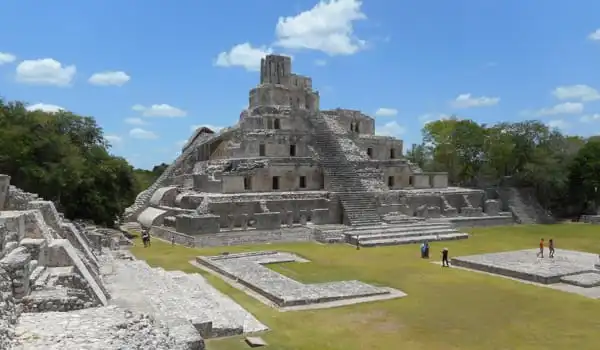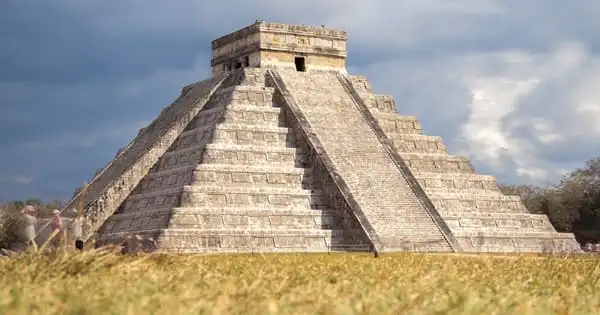A severe drought happened around the time the Maya began to vanish. And, at the time of their demise, the Maya had cleared enormous expanses of the land of forests in order to clear fields for cultivating grain to feed their swelling population. They also cut down trees for firewood and building materials. A new study calls drought into question as the cause of the ancient Mayan civilization’s demise.
There is solid doubt that a series of droughts struck the Yucatan Peninsula in southeastern Mexico and northern Central America at the end of the ninth century when Maya civilizations mysteriously began to disappear. Some researchers believe that because the Maya were mostly dependent on drought-sensitive corn, beans, and squash, the droughts resulted in hunger.
According to a new study by UC Riverside archaeologist Scott Fedick and plant physiologist Louis Santiago, the Maya had access to almost 500 edible plants, many of which are drought resistant. The findings of this study have been published in the Proceedings of the National Academy of Sciences.
When botanists investigate drought resistance, they normally talk about a specific species or an ecosystem. One of the reasons this experiment was so difficult was that we looked at the dietary flora of an entire civilization: annuals, perennials, herbs, trees, domesticates, and wild species.
Scott Fedick
“Even in the most catastrophic drought circumstance – and we have no good proof that the most extreme drought situation has ever occurred – 59 kinds of food plants would have persisted,” Santiago added.
Cassava, with its edible tubers, and palm hearts are two of the toughest plants the Maya would have turned to. Another example is chaya, a shrub domesticated by the Maya and still eaten by their descendants today. It has a high protein, iron, potassium, and calcium content in its leaves. “The combination of chaya and cassava would have delivered a massive amount of carbohydrates and protein,” Santiago explained.
New evidence demonstrates how the Mayans adapted to drought circumstances in order to sustain a city of tens of thousands of people for 1,500 years. The findings, which will be published in the Proceedings of the National Academy of Sciences, suggest to sustainable water-management technologies that assisted the Mayan city of Tikal in its drought-fighting efforts. But how did this system look?

The most amazing structure is a dam that can hold up to 20 million gallons of water. The human-made edifice was 260 feet long and 33 feet high, and it was built using cut stone, debris, and earth. According to a news release from the University of Cincinnati, whose scholars were part of the archeological team researching the Mayan water system, it’s the largest known dam built by the Central American Mayans. However, the city did not rely on rain dropping straight into the massive dam. Instead, they construct sloping paved and plastered surfaces with waterways feeding larger reservoirs. Essentially, their courtyards and plazas functioned as a gravity dam, and rainwater flow was beneficial.
Fedick has assembled and released a master list of indigenous Maya food plants, which builds on decades of Maya plant knowledge. With much discussion regarding drought being the cause of Maya social upheavals, he and Santiago decided to test the drought resistance of all 497 plants on the list.
“When botanists investigate drought resistance, they normally talk about a specific species or an ecosystem,” Fedick explained. “One of the reasons this experiment was so difficult was that we looked at the dietary flora of an entire civilization: annuals, perennials, herbs, trees, domesticates, and wild species. It was a one-of-a-kind undertaking.”
Of course, water cleanliness in cities was a problem back then, as it is now. Researchers discovered that the city used this technology to clean its water by placing sand boxes in the canals to filter the water before it reached the main reservoir. The researchers discovered quartz sand in the old city, which is not native to the area. To find the sand for the filtering system, the Mayans would have had to travel around 20 miles.
So, what can cities of today learn from this ancient water management system?
Though the researchers do not have a definitive answer for why ancient Maya culture disintegrated, they believe social and economic instability had a part. “One thing we do know is that the too basic explanation of drought leading to agricultural failure is most likely incorrect,” Fedick added.
The study also illustrates the need of utilizing a diverse range of plants in order to resist drought and climate change. “Even in the face of a series of droughts, keeping a mix of hardy crops would allow people, ancient and modern alike, to adapt and live,” Santiago added.





